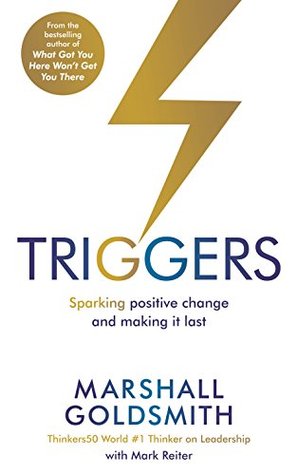More on this book
Community
Kindle Notes & Highlights
Regret is the emotion we experience when we assess our present circumstances and reconsider how we got here. We replay what we actually did against what we should have done—and find ourselves wanting in some way. Regret can hurt.
My job is then very simple. I help my clients achieve positive, lasting change in the behavior that they choose as judged by key stakeholders that they choose.
If the key stakeholders do not see positive change, I don’t get paid.
Our inner beliefs trigger failure before it happens. They sabotage lasting change by canceling its possibility.
Our environment is a magnificent willpower-reduction machine.
This is a natural response that combines three competing impulses: 1) our contempt for simplicity (only complexity is worthy of our attention); 2) our contempt for instruction and follow-up; and 3) our faith, however unfounded, that we can succeed all by ourselves. In combination these three trigger an unappealing exceptionalism in us.
It’s the difference between, say, getting in shape and staying in shape—hitting our physical conditioning goals and maintaining them. Even when we get there, we cannot stay there without commitment and discipline. We have to keep going to the gym—forever.
A feedback loop comprises four stages: evidence, relevance, consequence, and action.
This is how feedback ultimately triggers desirable behavior. Once we deconstruct feedback into its four stages of evidence, relevance, consequence, and action, the world never looks the same again. Suddenly we understand that our good behavior is not random. It’s logical. It follows a pattern. It makes sense. It’s within our control. It’s something we can repeat. It’s why some obese people finally—and instantly—take charge of their eating habits when they’re told that they have diabetes and will die or go blind or lose a limb if they don’t make a serious lifestyle change. Death, blindness, and
...more
Triggers are not inherently “good” or “bad.” What matters is our response to them.
last two dimensions of triggers—encouraging or discouraging, productive or counterproductive. They express the timeless tension between what we want and what we need. We want short-term gratification while we need long-term benefit.
The grid provides an answer. I’m not exposed to any encouraging triggers pushing me toward the goal. I only worry out loud about the weight with my wife, Lyda. But when I do so, she showers me with positive reinforcement. “You look fine,” she says. Encouraging words, but not the kind driving me in the right direction. She’s not lying to make me feel better.
And the right side is the only place to be for achieving behavioral change.
It comprises three interconnected stages: anticipation, avoidance, and adjustment.
As I considered the distinction between Do you have clear goals? and Did you do your best to set clear goals for yourself? it hit me that I’d been making the same passive-versus-active error in my own life.
Behavioral change demands self-discipline and self-control. We tend to use these terms interchangeably, but there’s a subtle difference. Self-discipline refers to achieving desirable behavior. Self-control refers to avoiding undesirable behavior.
Most people are better at one than the other. They’re good at repeating positive actions, not so good at avoiding negative ones. Or vice versa. This disconnect explains the walking oxymorons among us—the strict vegetarians who smoke, the flabby personal trainers, the accountants declaring personal bankruptcy, the executive coaches who need their own coach.
By focusing on effort, they distract us from our obsession with results (because that’s not what we’re measuring). In turn, we are free to appreciate the process of change and our role in making it happen. We’re no longer frustrated by the languid pace of visible progress—because we’re looking in another direction.
At the most basic level, a coach is a follow-up mechanism, like a supervisor who regularly checks in on how we’re doing (we’re more productive when we know we’re being watched from above).
At the highest level, a coach is a source of mediation, bridging the gap between the visionary Planner and short-sighted Doer in us. The Planner in us may say “I’m going to read Anna Karenina over vacation,” but during a holiday packed with enticing distractions, it’s the Doer who has to find a quiet corner and get through Tolstoy’s many pages. A Coach reminds us of the unreliable person we become after we make our plans. A Coach reminds the fragile Doer what he’s supposed to do. It’s a simple dynamic that looks like this:


